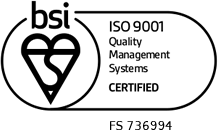A new paper, co-authored by Electrosciences, is published in Applied Physics Letters.

Spin density of the system (isosurface level 1⁄4 0.005): O (red), Bi (pink), La (green), Ti (light blue), Co (dark blue), and Fe (yellow) atoms.
Multiferroics that simultaneously exhibit ferroelectricity and ferromagnetism have recently attracted great attention due to their potential application in next generation electronic devices. However, only a few single-phase multiferroic materials exhibit ferroelectric and ferromagnetic orders at room temperature. Recently, some bismuth layer-structured Aurivillius compounds were reported as multiferroics at room temperature, but the origin of their magnetic property is still under debate because the net magnetization may originate from the presence of secondary phases that are not easily detected by laboratory XRD diffractometers. Here, textured Aurivillius phase Bi5.25La0.75FeCoTi3O18 ceramics were prepared by Spark Plasma Sintering. The ferromagnetic character of the ceramics was indicated by the magnetic field-induced reversible intensity changes of a certain set of crystalline planes belonging to the Aurivillius phase, as measured by in situ neutron diffraction under the applied magnetic field. The first principles calculations indicate that the ferromagnetism originates from double exchange interactions Fe –O–Fe , Co –O–Co , and Fe –O–Co in the ferro-toroidal main phase. The magnetic-controlled ferroelectric domain switching was observed by piezoelectric force microscopy at room temperature. The prepared Aurivillius phase ceramics, with Co/Fe contrib- uting to magnetization and polarization at the same time, can be considered an intrinsic room-temperature multiferroic.
Z. Li, V. Koval, A. Mahajan, Z. GAO, C. Vecchini, M. Stewart, M. G. Cain, K. Tao, C. Jia, G. VIOLA, and H. Yan, “Room-temperature multiferroic behavior in layer-structured Aurivillius phase ceramics,” Appl. Phys. Lett., vol. 117, no. 5, pp. 1–6, Aug. 2020.



